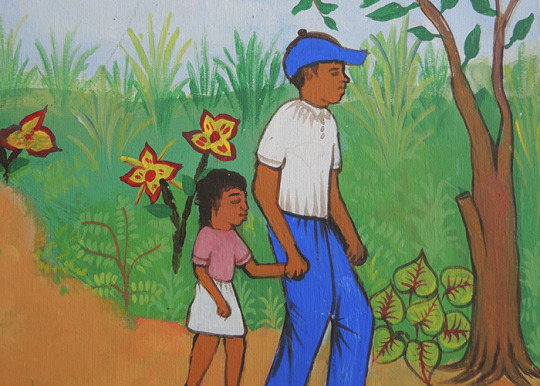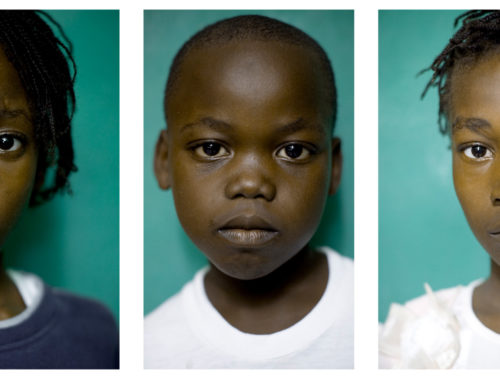Art provides an incredible opportunity for people to come to
know and experience Haiti and its vibrant culture. Though Haitian art is a somewhat complex tradition, it is an important representation of the nation’s diverse population and rich history. Unlike some parts of the world, the artwork in Haiti is not confined to museums and galleries, but rather, it can be enjoyed on public transportation and in city streets! Here are just a few more unique ways Haitian artwork sets itself apart from the rest:
Painting is one of the more popular mediums among Haitian artists, who enjoy using bright, bold colors to create very imaginative images. In addition to surrealist style paintings, many artists also depict daily life in the city or scenes relating to Haiti’s topography, highlighting its steep mountain peaks and stunning ocean coastlines.
Making flags is a long-standing tradition for many Haitians, used as a way to commemorate beloved spirits or saints. Though the use of sequins in flag-making first became prevalent during the 1940s, they continue to be used today. The majority of modern flags are made from shiny, silk fabrics, covered in a beautiful mosaic of beads and colored sequins. A full-size banner may contain up to 20,000 sequins, and take as many as ten days to complete!
Steel sculptures in Haiti are commonly formed out of natural, found, or recycled materials. Artists find creative ways to reuse these discarded objects, and transform them into something beautiful. It’s typical to see sculptures created from several components fused together, like old oil drums, rivets, marbles, wire, and more.
Wood remains a precious commodity in Haiti, as a low supply and high demand has greatly increased the cost of lumber. What this means is, not only is wood highly valued, but it is well respected in the Haitian culture as well. Artists have been creating incredible wooden sculptures for decades now, whittling figures and carving shapes out of its branches with intense care.
Making crafts is a welcomed pastime and even profession for many Haitians, though this type of artwork can take on many different forms. Sometimes, religious icons and prayer vessels are made using bottles decorated with colorful sequins. Still other popular craft choices include leather sculptures, jewelry making, hand-sewn clothing, and ornate, hand-carved wooden furniture.
As alluded to, art can be found everywhere in Haiti, from bus facades to murals marking city streets. Over the years, painting, sculpture, music, poetry, and dance have evolved as respected expressions of social and political conditions. Not only does much of Haiti’s artwork shed light on the nation’s history and religious influences, but it is a catalyst for sharing stories and proverbs of resilience, resistance, and hope.
As you can see, the art scene in Haiti is alive and well! Artists there are excited to share their original artwork with the rest of the world, as they continue to create an array of beautiful, unique pieces, reflective of both the past and present culture thriving on the island.
Many of the children in our Child Advocacy program and in our Transitional Homes are gifted artists, having had a chance to explore their artistic side through our summer camps and school activities. Check out some of their handiwork below!














